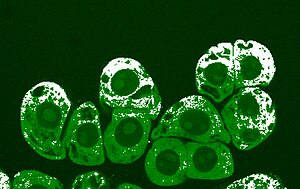
Japanese researchers have developed a new way to deliver nitric oxide (NO) gas into cells.
Nitric oxide is a workhorse in the body. It signals cells to divide, expands blood vessels and sends signals between nerve cells in the brain. Scientists believe that figuring out how NO controls all this may help them come up with new approaches to treating cancer and neurodegenerative diseases.
Despite progress, it’s still a mystery just how much NO causes specific effects. “No existing technique has been able to capture what this gas is truly doing at the cellular level,” said Stephane Diring, who led the study.
By combining chemical and biological techniques the team of researchers, from Kyoto University’s Institute for Integrated Cell-Material Sciences (iCeMS) put together a nano-based structure called MOF for delivering NO that could release its payload to nearby cells based on how much light is delivered to it. Kind of like an underground sprinkler system delivers water to a lawn.
The system lets them control exactly where and how much nitric oxide is delivered by tuning the intensity and wavelength of the light, according to researcher Shuhei Furukawa. Plus, the fact that the light is infrared means it won’t harm other cells.
One giant leap into understanding NO. One small step in the never-ending battle to develop non-invasive therapies.
